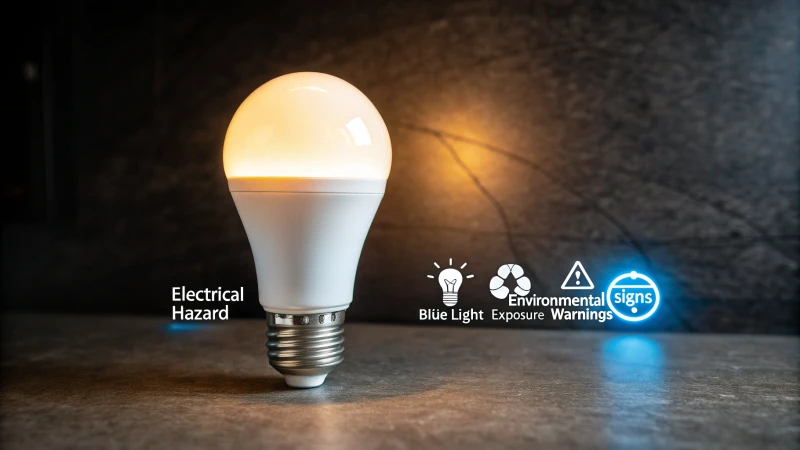What Should You Know About LED Lighting Safety?

Ever wondered how LED lighting can brighten your life safely and efficiently?
LED lights are generally safe for home and office use, but it’s crucial to be aware of risks like blue light exposure, electrical hazards, and environmental impact. By choosing certified products and adhering to usage guidelines, you can enjoy LED benefits while ensuring safety.
I remember the first time I switched to LED lights in my home. Initially, I was drawn to their energy efficiency and long lifespan. However, I soon realized that understanding their safety features was just as important. Delving into specifics such as safety standards, potential health effects, and environmental concerns helped me make informed decisions. Through this post, I’ll share insights and practical advice that have helped me balance the benefits of LED lighting with safety considerations.
LEDs emit harmful levels of blue light.False
LEDs emit blue light, but not at harmful levels with proper use.
Certified LED products reduce safety risks.True
Certified LEDs meet safety standards, minimizing potential hazards.
How Do LED Lights Affect Your Health?
Have you ever wondered how those shiny LED lights impact your health?
LED lighting affects health by disrupting circadian rhythms, potentially causing eye strain, and influencing mood. These effects are connected to the intensity and color temperature of the lights.

How LED Lighting Affects Sleep Patterns
I remember the first time I swapped out my cozy yellow bulbs for bright white LEDs. They seemed great for my energy bill, but soon I was tossing and turning at night. It turns out, those high blue light LEDs were messing with my melatonin production, the hormone that helps regulate sleep. I learned that this type of light can trick your brain into thinking it’s still daytime, delaying sleep onset. To combat this, I switched to warm-toned LEDs in my bedroom to create a more sleep-friendly environment. If you’re struggling with sleep like I was, it might be worth trying this adjustment.
| Light Type | Melatonin Suppression Potential |
|---|---|
| Cool White | High |
| Warm White | Low |
Eye Strain and LED Lighting
After hours in front of my computer, my eyes would ache, and I’d feel a dull headache creeping in. Sound familiar? That’s when I discovered that prolonged exposure to LED lights, especially from screens, could lead to digital eye strain. The intense blue light can cause discomfort and fatigue, which is why I now make sure to use LEDs with adjustable brightness in my workspace. Plus, I’ve started following the 20-20-20 rule: every 20 minutes, I take a 20-second break to look at something 20 feet away. It’s a simple change that’s made a big difference.
Mood and Psychological Effects
Lighting has this amazing ability to set our mood, doesn’t it? I noticed that in my office, the bright, cool-toned LED lights helped keep me alert and productive. But at home, in my relaxation zones, these lights felt harsh. Warm-toned LEDs are my go-to now for creating a calming atmosphere. Research backs this up, showing how lighting can influence mood disorders. So choosing the right color temperature isn’t just about aesthetics; it’s about well-being. Curious about more on this? Dive into lighting psychology1 for deeper insights.
Safety Standards and Certifications
I always ensure my LED products meet safety standards before making a purchase. Look for certifications like CE, RoHS, or UL—these ensure compliance with health safety standards and reduce risks associated with subpar lighting products. It’s a small step that brings peace of mind. Always check certification details on the packaging or product descriptions to ensure quality assurance and safety compliance.
For a comprehensive overview of LED safety certifications2, explore industry resources and guidelines.
Choosing the right LED products based on their usage context can minimize potential health impacts while maximizing their benefits.
LED lights can disrupt melatonin production.True
LEDs with high blue light content interfere with circadian rhythms.
Warm-toned LEDs increase digital eye strain.False
Warm-toned LEDs have a lower potential for causing eye strain.
